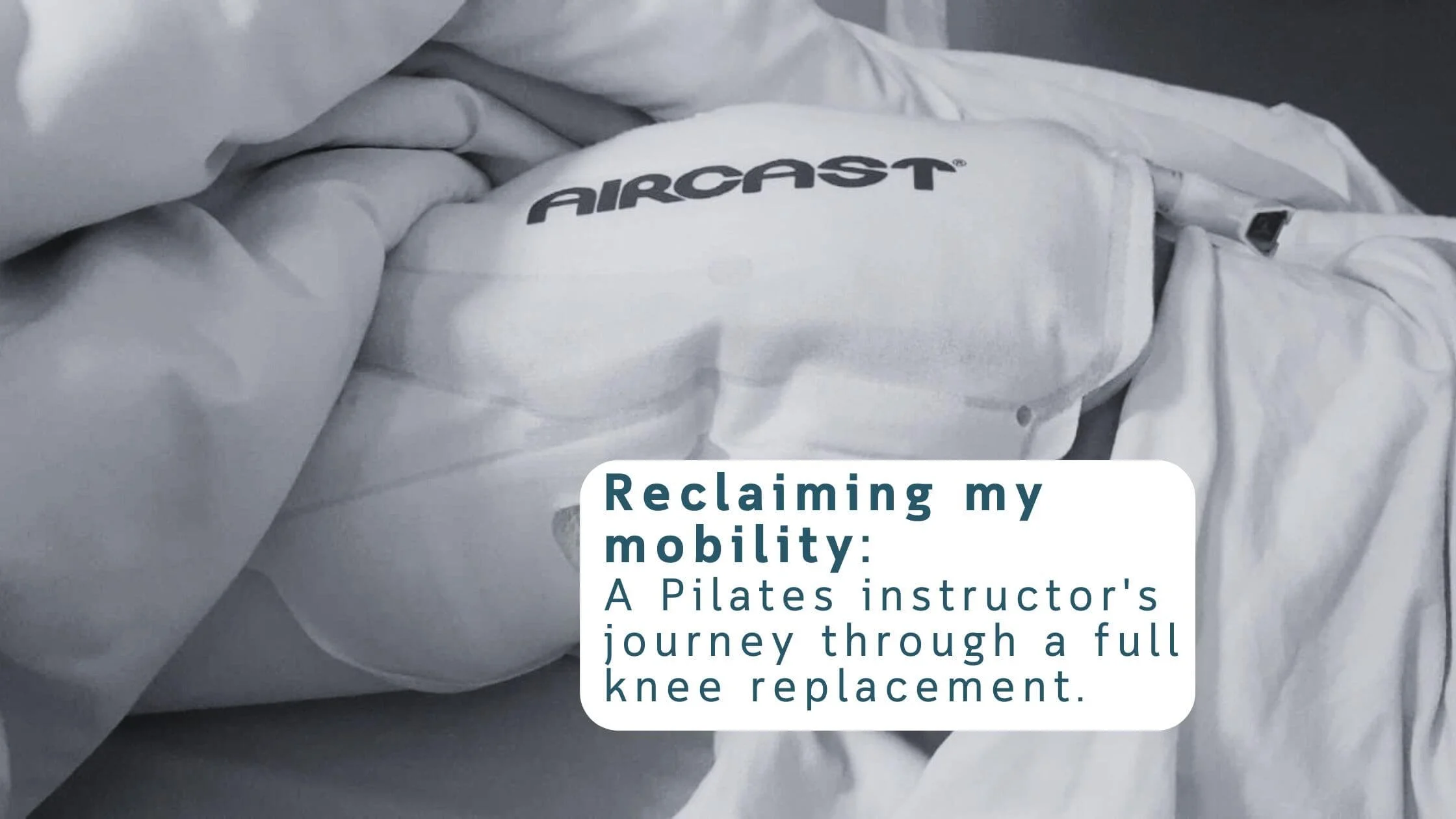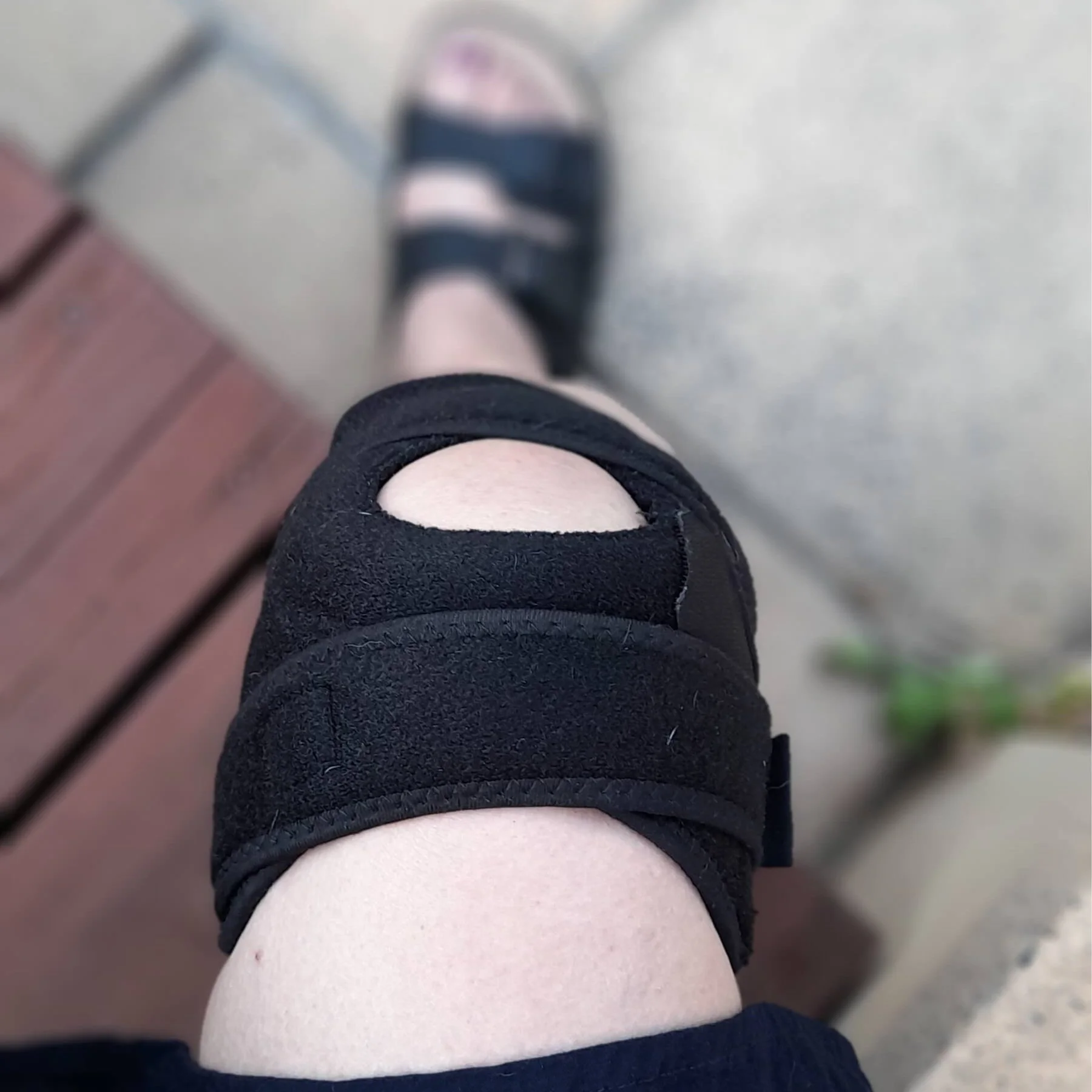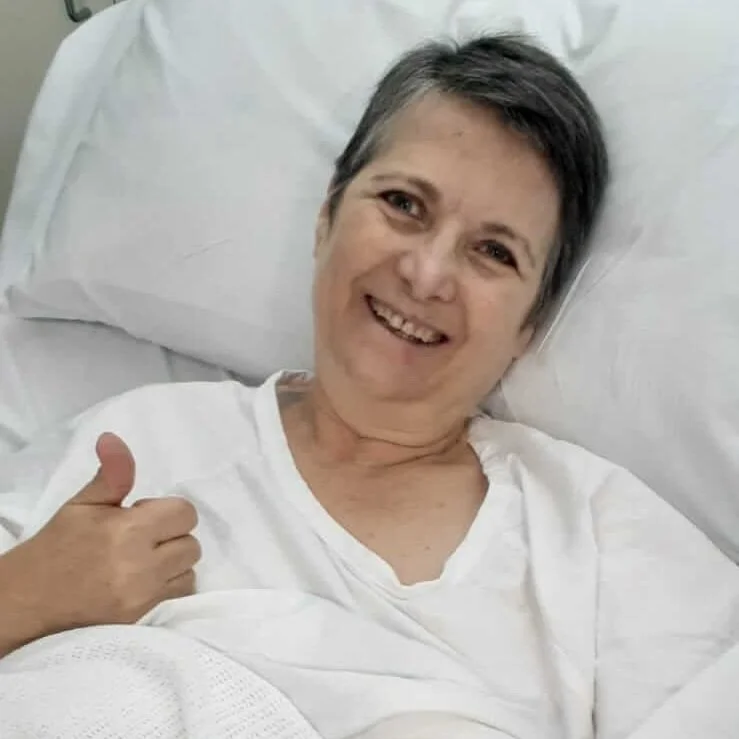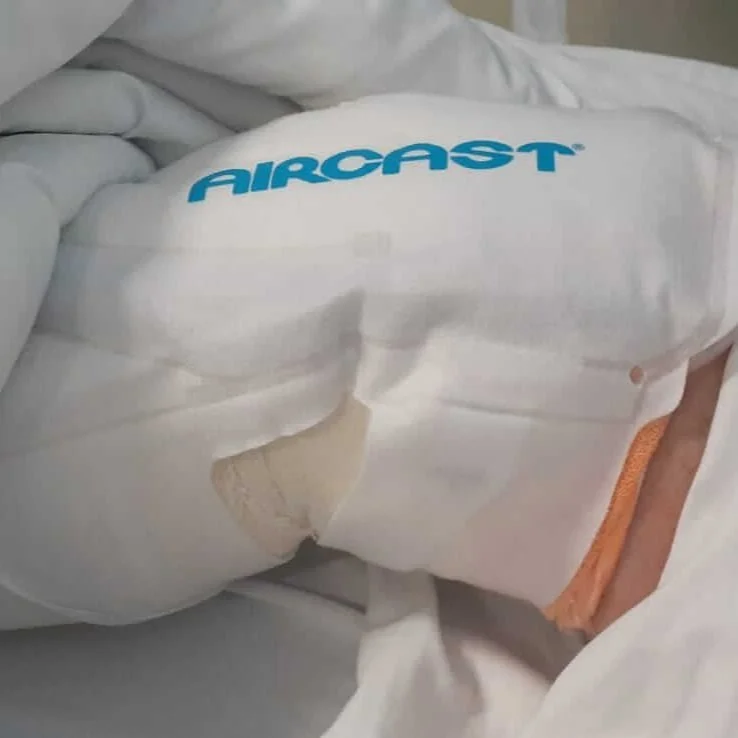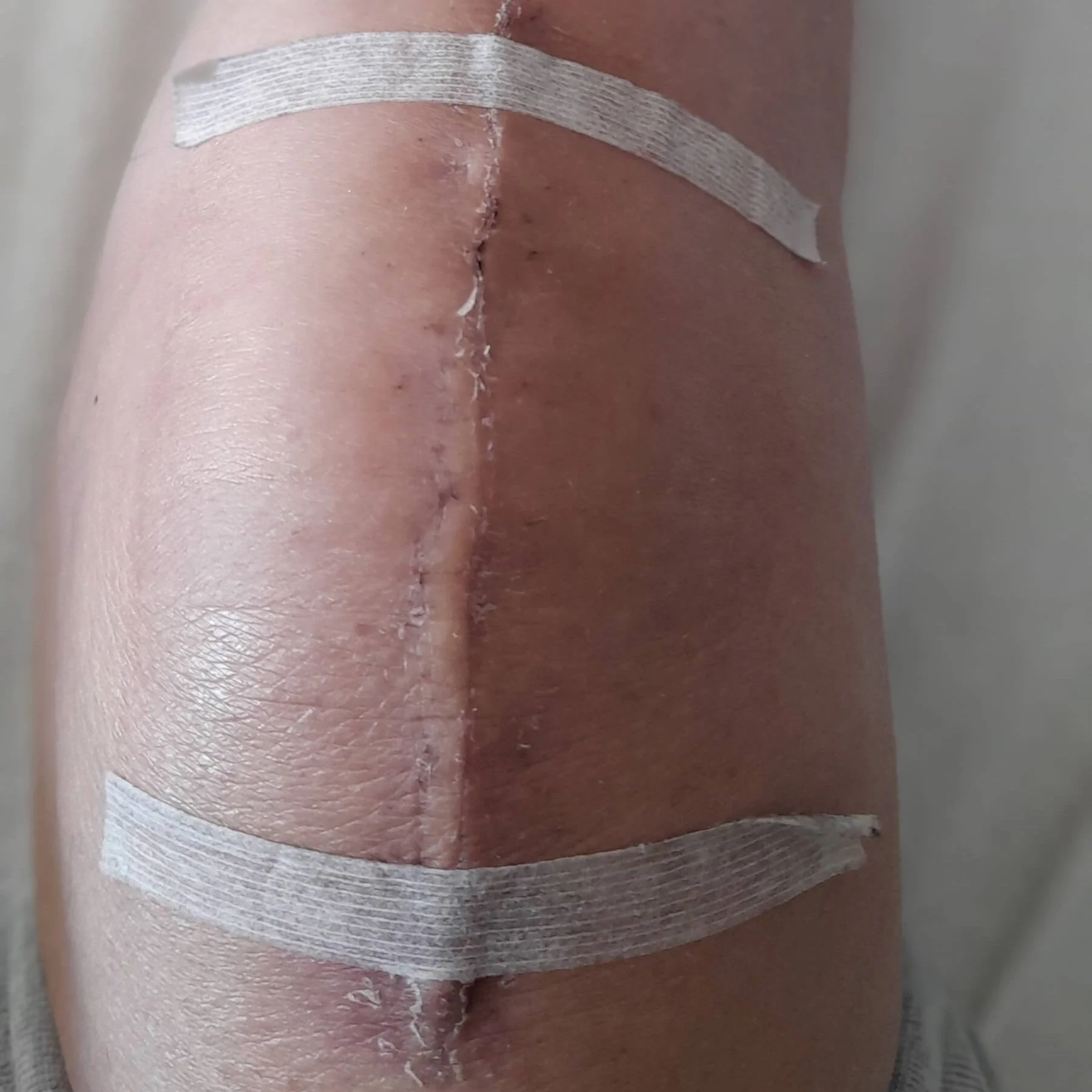Reclaiming my mobility: A Pilates Instructor’s journey through a full knee replacement.
A personal story.
As an ex-ballet dancer, I am no stranger to physical pain, but two and a half years ago, when I tore my meniscus during a Taekwondo class, the pain was excruciating. I tried everything I knew as a trainer: R.I.C.E. (rest, ice, compress, elevate) and weekly physiotherapy, strength training and strapping the knee, but the pain persisted.
Despite my physio's advice to stop, I continued training for my Taekwondo black belt.
It's difficult to explain the deep desire to achieve something so great, at all costs, to someone who hasn't experienced it. I already held black belts in other martial arts styles and had worked incredibly hard for this one.
I just kept thinking, if I can get this belt, then i’ll stop classes.
But the pain knew better. Eventually, it became unbearable. During a training session, I was to kick a pad doing 3 different kicks. I tried the first kick and had to breathe through the pain, when I finished the second kick, I burst into tears. The pain was unbelievable!
There and then I realised that I would never get through my black belt grading if I couldn't perform these and other kicks. I was devastated!
(It took more than a year to overcome the feeling of being failure and I had to face a grieving process that I am still dealing with today.)
Pre-surgery experience
I finally saw an orthopaedic surgeon who diagnosed severe osteoarthritis in my knee, with bone-on-bone contact. The only relief would come from a total knee replacement. I was placed on a waiting list but continued training.
The x-rays i had done showed severe osteoarthritis in the inner part of the knee joint and the space between the bones on this area was significantly reduced. There were many fluid-filled cavities (cyst) in the bone just below the joint surface on the shin bone side. There were small bony growths present on the kneecap joint and outer part of the knee, but these were less severe.
These findings indicate advanced wear and tear in the knee, particularly on the inner side, which likely caused significant pain and reduced mobility for me.
I struggled with walking, feeling frustrated that I couldn't take my dogs for a walk and often declined invitations to outings that involved walking.
As a Pilates mat instructor and solo entrepreneur, I prepared for my absence by recording classes for my clients and scheduling social media posts.
Preparing for surgery
The pre-admission clinic at the hospital was thorough. I opted for a spinal tap instead of general anaesthesia to avoid side effects like nausea and dizziness. I was instructed to book a GP appointment one week after surgery and a follow-up with the surgeon six weeks post-op.
I attended the hospital's "Active Waiting" programme for a year, which involved monthly visits to a physio and hydrotherapy classes.
Two weeks before the surgery, I was told to wear long sleeves and trousers to prevent mosquito bites and scratches. If I had any of these, my surgery would be cancelled.
My beautiful friend surprised me with a gift basket for my surgery. Her gift was well sort out of her experience. Little things like herbal tea can make all the difference when you can’t stomach another cup of milky tea. The health magazines were such a blessing when you feel I felt I couldn’t concentrate of my novel. Other added gifts of healthy chocolate, nuts etc were welcome, especially when waiting for meals.
The surgery day
After several postponements, 18 months after my first surgeon consultation, I finally had my surgery date.
I felt unusually calm. I was warmly greeted by Scottish and South African anaesthetists who explained the procedure.
The surgeon inserted a catheter, and that was the last thing I remember before waking up in the recovery ward.
This photo was taken in the ward when I woke up from surgery.
Am I smiling or am I still enjoying being pain free from the spinal tap?
Early recovery
The nurses were proficient in provided pain relief and ice packs on a regular bases. I never felt any knee pain so to speak, but i most definitely felt the muscles around the knee i.e. thigh, hamstring and calf muscles.
This little magic ‘Aircast’ bag was filled with ice water on a regular bases and then wraps around the knee with velcro.
I did experience vertigo and nausea, which were treated with medication.
The day after surgery, the catheter was removed and I was able to walk to the bathroom using a high walking aid. (On that note, make sure to speak to the nurses about meds or ask for pear juice to help with constipation. You are already feeling crummy because of the surgery, the last thing you want to add is constipation too.)
Physiotherapy began immediately, with exercises to bend and straighten my knee.
Our days as patients were either spent chatting to each other, sleeping or reading. Not much else apart from looking forward to your visitors.
Being discharged from the hospital
The day I was discharge was a public holiday.
Unfortunately I was given no pain meds as the pharmacy was closed. I was however given scripts to take the following day. I would not recommend anyone leaving the hospital without pain meds. It’s just not worth it!
The road to recovery
After I was discharged, I faced unexpected challenges. Chronic fatigue persisted for about two months post-surgery. I would only be up for a 2 or 3 hours, then have to go back to rest.
I resumed teaching Pilates mat classes six weeks after the knee replacement, modifying exercises to accommodate my new knee's limited range of motion.
I attended knee rehab classes twice a week, performing exercises like seated leg straightens, leg raises, and standing exercises. Each session ended with measurements of my knee's bend. Once I measured 100 degrees, I graduated from knee rehab classes.
To see what type of exercises I did in the Knee clinic, click here.
6 Weeks after the surgery, I reported to the wound clinic.
They removed the surgical covering and cleaned the wound.
This was the first time that I could see my knee knee properly.
They placed tape at the top and bottom of the wound. I was told that this would probably fall off within 2 weeks.
Life with a new knee
I continue to see my physiotherapist, Mel Turner, weekly. During each session, she assesses my knee's range of motion before and after massaging the tight muscles.
Mel has prescribed specific exercises to strengthen my inner thigh and quadriceps muscles, which she regularly evaluates to monitor my progress.
Things were progressing and I felt hopeful . . .
Then this happened: -
Two and a half months after surgery, I had an unfortunate slip on our dog's metal food bowl. This incident, combined with a bout of flu, was a setback in my recovery.
Falling on that knee caused a haematoma on both sides of the knee.
Wearing a cotton tubing sleeve helped the inner lump, but the outer lump took much longer. It also caused my knee to stiffen up.
With plenty physio and heat and ice packs over time, the outside lump is now gone. Wahoo!
Advice for others: -
Before surgery: -
For those considering knee replacement, I recommend the following:
Do at least 3 months of full-body strength training, 3 days a week.
Prepare homemade frozen meals.
Borrow a walker and Canadian crutches.
(I preferred walking with crutches as opposed to using a walker. I felt that when I used the walker I was tilted forward, increasing the tightness in my calf, leaving it feeling stiff and sore all the time, but not when using crutches.
After surgery:
Wear our compression stockings for 6-weeks post surgery to prevent any clots.
Ice is your best friend.
Do your exercises EVERY day and walk as much as you can handle.
Take your pain meds before attending any physio sessions and apply ice to the knee afterwards to prevent swelling.
Please note:
Should your knee become more painful, swollen or feels hot to the touch or if you notice redness around the wound, see you GP.
If you feel breathless or develop any swelling with redness in your calf, see your GP or Emergency department asap.
In conclusion, while the journey has been challenging, the improvement in my mobility and reduction in pain have made the process worthwhile.
Remember, everyone's experience is unique, and patience is key in the recovery process.


